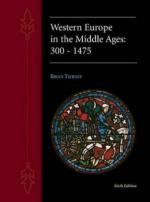|
This section contains 1,426 words (approx. 5 pages at 300 words per page) |

|
The Flowering of Cluny.
As the pervasive presence and influence of Benedictine monasticism emerged from Carolingian reforms of the ninth century, a particularly powerful house at Cluny (in the Burgundy region of eastern France) became the embodiment of church leadership, independence, and success in Western Christianity. Through cooperation with its benefactor, Duke William the Pious of Aquitaine, the monastery (founded in 909) adopted an original charter that allowed the monks to choose their own succession of abbots without interference or intervention from outside secular or church authorities. The abbot and community were also to have complete control over all of the monastery's properties, being answerable only to the Apostolic See in Rome. A string of influential and creative abbots—Odo (926–944), Mayeul (965–994), Odilo (994–1048), and Hugh (1049–1109)—caused the house to become...
|
This section contains 1,426 words (approx. 5 pages at 300 words per page) |

|




